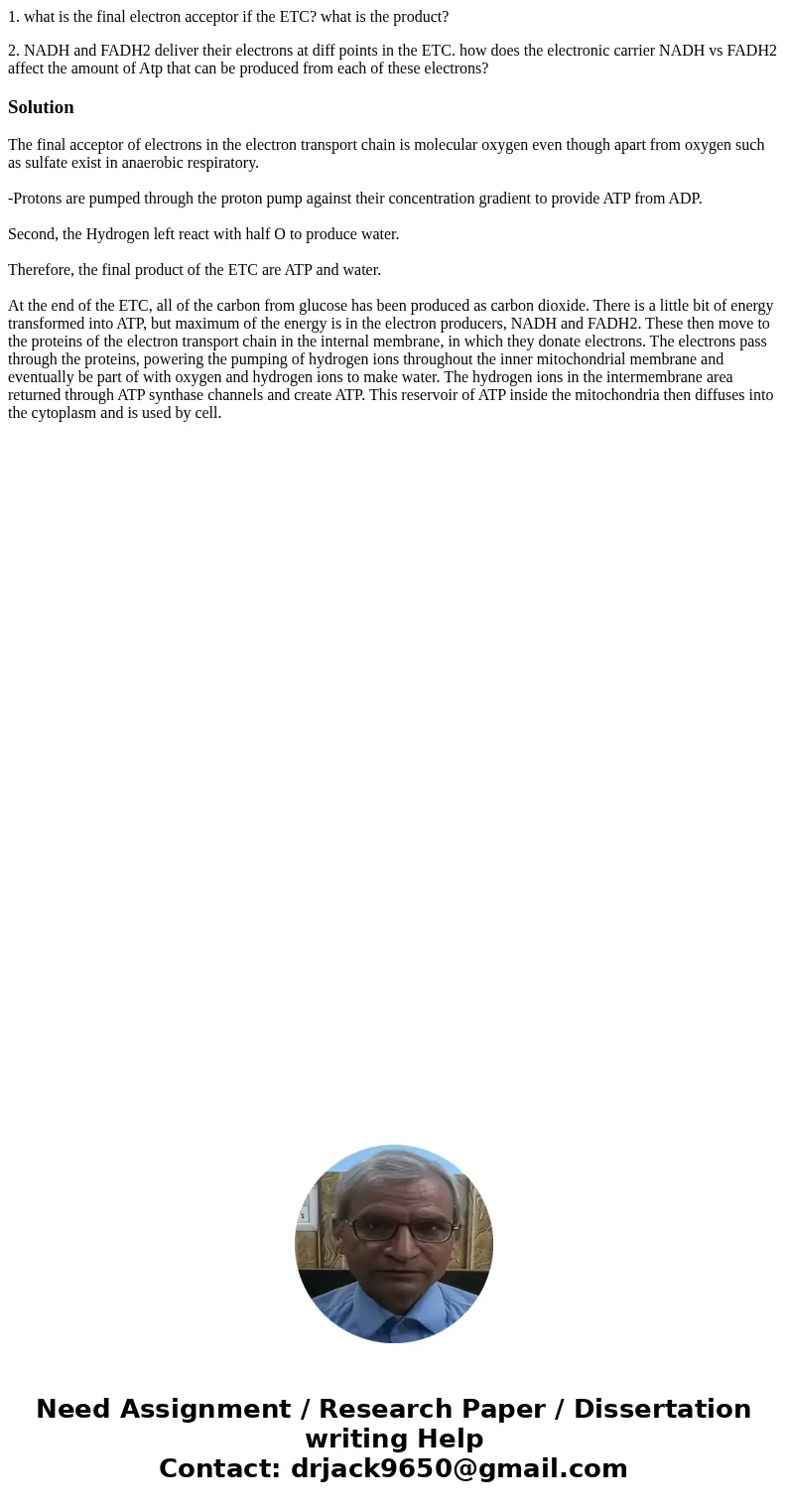1 what is the final electron acceptor if the ETC what is the
1. what is the final electron acceptor if the ETC? what is the product?
2. NADH and FADH2 deliver their electrons at diff points in the ETC. how does the electronic carrier NADH vs FADH2 affect the amount of Atp that can be produced from each of these electrons?
Solution
The final acceptor of electrons in the electron transport chain is molecular oxygen even though apart from oxygen such as sulfate exist in anaerobic respiratory.
-Protons are pumped through the proton pump against their concentration gradient to provide ATP from ADP.
Second, the Hydrogen left react with half O to produce water.
Therefore, the final product of the ETC are ATP and water.
At the end of the ETC, all of the carbon from glucose has been produced as carbon dioxide. There is a little bit of energy transformed into ATP, but maximum of the energy is in the electron producers, NADH and FADH2. These then move to the proteins of the electron transport chain in the internal membrane, in which they donate electrons. The electrons pass through the proteins, powering the pumping of hydrogen ions throughout the inner mitochondrial membrane and eventually be part of with oxygen and hydrogen ions to make water. The hydrogen ions in the intermembrane area returned through ATP synthase channels and create ATP. This reservoir of ATP inside the mitochondria then diffuses into the cytoplasm and is used by cell.

 Homework Sourse
Homework Sourse